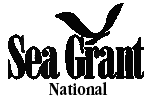Structure/Form:
-
In the top left corner, type "Media Advisory."
-
Beneath "Media Advisory," type the date.
-
Type "###" at the end of your advisory. This is how journalists mark the end of copy.
-
Type "MORE" at the end of page 1 if your advisory is two pages, and put a contact phone number and short headline in the upper-right hand corner of subsequent pages.
-
Print your advisory on your organization’s letterhead.
How to distribute it
- A media advisory should arrive at news outlets 3 to 5 working days before the event.
Fax or mail (if time permits) your advisory to the appropriate reporter, editor or producer at each news outlet on your press list.
- If your region has a "daybook" (you can find out by calling the newsroom of your largest local newspaper) be sure to submit your advisory. A daybook lists news events scheduled to take place in the region on that day. Major news outlets review the daybooks each morning.
- ALWAYS make follow up calls the day before your event, and have the advisory ready to be faxed.
A MEDIA RELEASE:
-
Informs reporters about your event, report, or issue.
-
More detailed than the advisory—should tell all the information a reporter needs to write their piece.
-
Envision, then write the press release as the news story YOU would want to see written.
-
Sent out the morning of or the day before the event.
Elements
- Headline. This will make or break a news release—include the most important information in the headline, and make it punchy. The headline can be up to four lines if necessary, including a sub-head, if used, but keep it short (and remember to use a large font).
- Important information should jump off the page—most reporters will only spend 30 seconds looking at a release.
Spend 75 percent of your time writing the headline and the first paragraph.
Use the inverted pyramid style of news writing. Make your most important points early in the release and work your way down.
- Keep sentences and paragraphs short. No more than three sentences per paragraph.
- Include a colorful quote from a spokesperson in the second or third paragraph.
- Include a short summary of your organization in the last paragraph.
- Mention "Photo Opportunity" if there is one. Be sure to send a copy of the release to the photo desk.
Structure / Form
-
In the top left corner, type "For Immediate Release."
-
Below "For Immediate Release," type the date.
-
Contact Information: In the top right corner, type names and phone numbers of two contacts. Make sure these contacts can be easily reached by phone. Including the contact’s home phone number, if appropriate.
-
Type "###" at the end of your release. This is how journalists mark the end of a news copy.
-
Type "MORE" at the end of page 1 if your release is two pages, and put a contact phone number and short headline in the upper-right hand corner of subsequent pages.
-
Print your release on your organization’s letterhead.
How to Distribute It
-
A release should be sent out the morning of, or the day before your event. In some cases, you may want to send an "embargoed" copy to select reporters ahead of time, meaning that the information is confidential until the date you specify.
Generally, send a release to only one reporter per outlet.
-
If your release announces an event, send it to the "daybooks." A daybook lists news events scheduled to take place in the region on that day. Someone from each major outlet reviews the daybooks each morning.
-
ALWAYS make follow up calls after you send the release. If your release is announcing an event, make the calls the morning before your event is scheduled.
Have a copy of the release ready to be faxed when you make the calls.
Provided by: http://www.ran.org

Rainforest Action Network (RAN) works to protect the Earth's rainforests and support
© 2001 Rainforest Action Network; reprinted by permission. For information, write Rainforest Action Network, 221 Pine St., #500, San Francisco, CA 94104; or e-mail rainforest@ran.org
Web site: www.ran.org |





